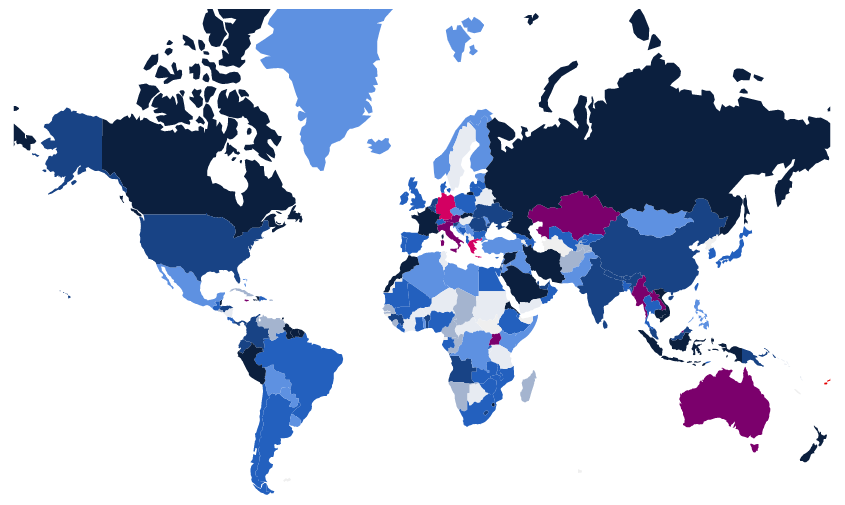December 2021
Text: Benjamin Berggold; Fotos: unsplash

The policies of the Austrian government aimed at tackling the COVID-19 pandemic are rapidly changing. Keeping track of the current policies isn‘t always easy. As an international events agency, it is essential to know which mandatory COVID-19 regulations and preventive measures are in place not only in Austria, but worldwide. Some of the policies vary and change fast. Getting an up-to-date and comparable overview and making forecasts for the future may sound like an impossible task at first.
Due to on-going projects, we are routinely analysing data in Germany, Dubai, and South Korea. In this article, we’d like to give you insights into the tools we use to ensure international planning.
Daily updates
The “Oxford COVID-19 Government Response Stringency Index“ provides a quick, yet general overview of the policies over time and compares the policy responses of individual countries. With the goal of facilitating policy comparisons, a team at the Blavatnik School of Government of the University of Oxford records policy measures that tackle the COVID-19 pandemic in a database and aggregates these into a stringency index. More than 100 volunteer students and academics are collecting publicly available data on governments‘ policy responses. These are assigned different scores, which are then aggregated into a composite index on a scale between 0 and 100. A higher score indicates stricter measures.
The daily updated “Heat Map“ of the Oxford COVID-19 Government Response Stringency Index“ can be accessed here.

It should be noted that the Oxford team is not currently collecting subnational data, which means that the index does not perfectly capture local policies in large or federal countries. A measure only in force in one or two regions (e.g., in Austria on the federal state level) has a smaller effect on the index than a nation-wide regulation. But policies in force in only one or two regions may inflate the overall score of a country.
Outlook into the future
Knowing what’s going on on a daily basis isn’t very helpful when it comes to events that are scheduled to take place (far) in the future, though. We can use historical data to draw conclusions about the stringency of restrictions in the countries affected. Has a country in the past been in “hard lockdown” several times, there is a high chance that another lockdown will be put in place to curb infection numbers (i.e., political decision-makers are more likely to use this measure). In addition to historical data, the willingness of the population to get vaccinated (or a vaccine mandate), and, as a result, the vaccination rate play an important part. The higher the vaccination rate, the more likely it is that restrictions will be lifted and events will take place in the future.
A list of international and up-to-date vaccination rates in the respective countries can be accessed here.

However, the conclusions that can be drawn do not guarantee that things will go ahead as scheduled. Rather, they allow for vague forecasts, to help navigate measures and projects, while the actual developments (such as mutations) may vary greatly. Nevertheless, these figures serve as a first basis that enables us to continue to plan and consult internationally.
